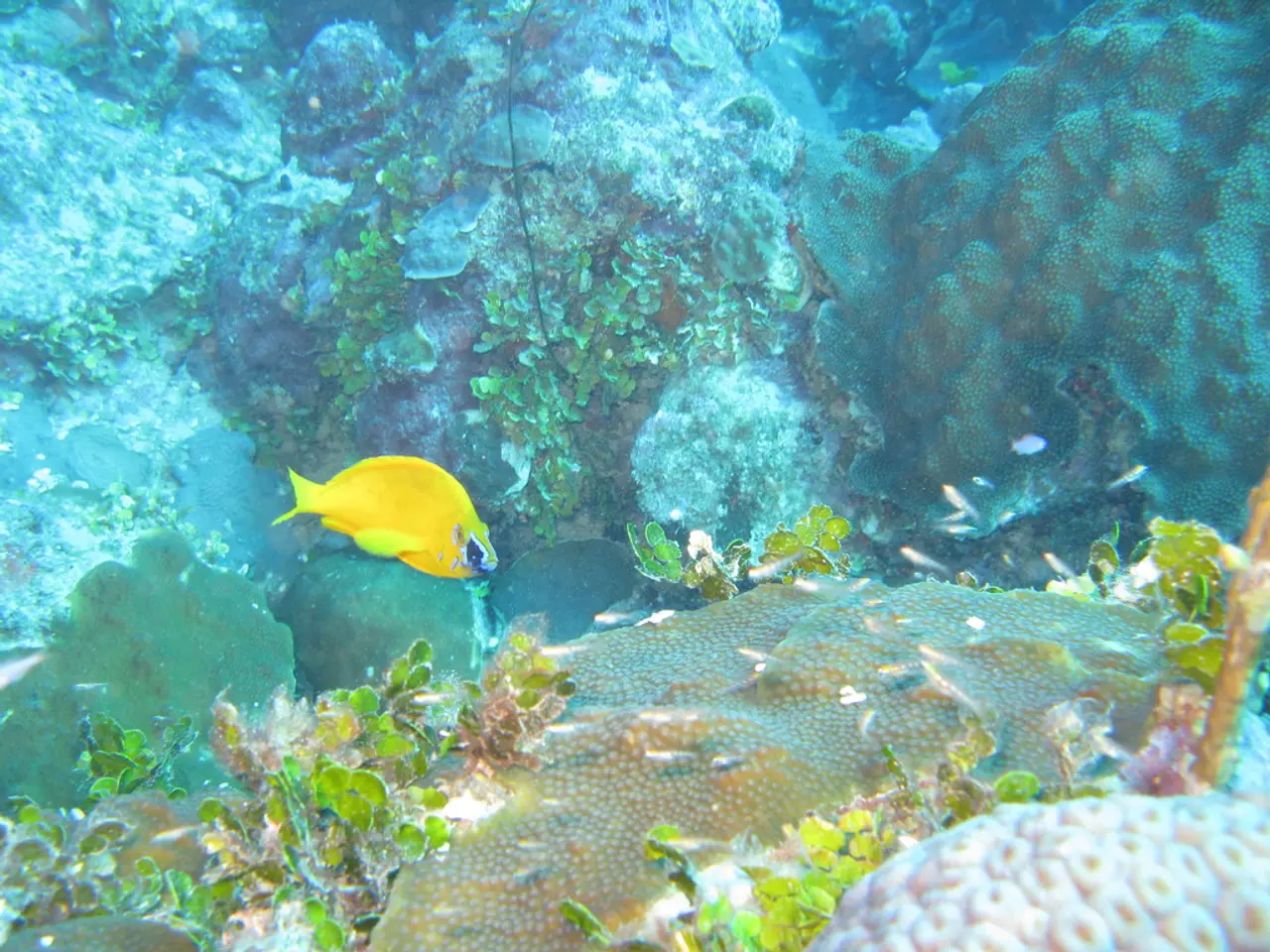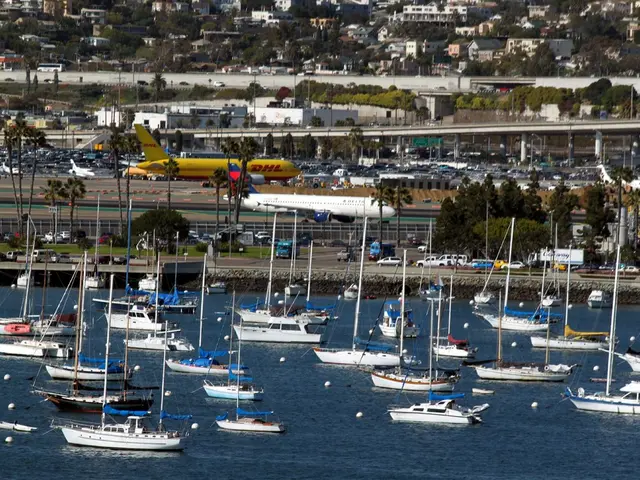Coastal Economy Enhancement through Marine Organism Cultivation: Capitalizing on Nature's Waste Recyclers for Financial Gain in Coastal Communities
Sea Cucumber Farming in India: A Sustainable and Lucrative Venture
With growing interest from government agencies and support under the Blue Revolution, sea cucumber farming is quickly becoming a viable option for coastal farmers in India. This maritime agriculture practice, focused on sustainable practices and habitat management, offers an opportunity to earn significant income while preserving marine biodiversity.
Key Requirements and Steps for Sea Cucumber Farming
- Site Selection: Choose areas with clean, unpolluted shallow waters that have the ideal temperature (26°C to 30°C), salinity (28-35 ppt), and substrate (usually sandy or seagrass beds favorable for sea cucumbers).
- Broodstock and Seedling Production: Use broodstock collection from wild populations or hatchery-reared larvae for stocking culture units. Hatchery technology can be employed to ensure a consistent seed supply.
- Culture Systems: Employ pen, pond, or sea enclosure systems where sea cucumbers can be grown in controlled conditions. Enclosures protect juveniles from predators and facilitate feeding and monitoring.
- Feeding and Growth Management: Sea cucumbers are mostly deposit feeders, consuming detritus and organic matter in sediments. Supplementary feeding may involve seaweed or formulated feeds to enhance growth.
- Monitoring and Maintenance: Regular monitoring of water quality, growth rates, disease signs, and predator control is necessary.
- Harvesting: After a growth period of several months, sea cucumbers are harvested carefully to ensure product quality.
Sustainable Sea Cucumber Farming and Ecosystem Health
Sustainable sea cucumber farming is linked to ecosystem health benefits, such as promoting seagrass growth, which serves as a favorable habitat for these animals.
Support for Sea Cucumber Farmers
The Central Marine Fisheries Research Institute (CMFRI) is the key organization involved in research, development, and extension of sea cucumber mariculture technologies in India. CMFRI works towards enhancing sustainable production through basic and strategic research, monitoring marine resources, and developing management plans for mariculture species including sea cucumbers.
Farmers should comply with coastal regulatory acts and obtain necessary permissions for aquaculture activities. CMFRI or state fisheries departments provide guidelines and support for technical and administrative requirements.
The Future of Sea Cucumber Farming in India
The advancement of marine agriculture, including sea cucumbers, remains a focus area for improving coastal livelihoods and resource sustainability in India. Harvesting is done by hand-picking, preferably during low tide, and the drying process is crucial for maintaining the quality and price of the final product. Dried sea cucumbers (called beche-de-mer) fetch high prices in international markets, up to Rs. 10,000-20,000 per kg depending on the quality. Sea cucumber farming requires training and initial support in seed supply and pond management. If farming in ponds, cow dung or rice bran may be added to enrich the sediment. Pond maintenance includes checking water quality and temperature regularly, preventing predators, avoiding overcrowding, and ensuring sediment has enough organic matter for feeding. Farming starts with seed collection from hatcheries, and farmers should procure healthy, disease-free seeds from registered hatcheries.
- In the realm of environmental science, sea cucumber farming aligns with the Blue Revolution, offering a lucrative business opportunity that promotes environmental preservation.
- The fashion-and-beauty industry might consider investing in sustainable sea cucumber farming, as the dried product, known as beche-de-mer, fetches high prices in international markets.
- With the rise of sustainable practices in lifestyle choices, interested individuals might consider aquaculture farming, such as sea cucumber farming, as a means to support the environment and finance their travels.
- In the home-and-garden sector, farmers could explore the use of organic materials like cow dung or rice bran to enrich the sediment in sea cucumber ponds, fostering a healthier ecosystem.
- The food-and-drink industry could incorporate sea cucumbers in their menus, promoting a more sustainable approach to cooking and supporting the local sea cucumber farmers.
- As businesses seek to reduce their carbon footprint and invest in renewable resources, exploring marine agriculture opportunities, such as sea cucumber farming, could provide a viable solution for both financial growth and environmental conservation.




